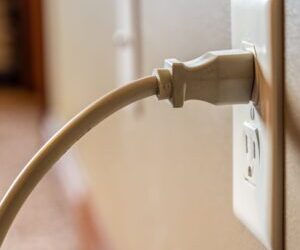We may have just got over a bitterly harsh winter, but it won’t be long before the next one rolls around. Winter proofing your home is something that you should perform during the summer to fall transition.
From checking for leaks and water damage, to clearing your gutters, some simple steps can protect your home. Follow our guidelines for winter proofing your home and enjoy a safer and dryer home later this year.
Protect Your Gutters
Leaves and other tree debris are the number one enemy of your gutters. Clogged gutters can cause water buildup and damage to your drainpipes. Roofing and siding damage is also possible if your gutters aren’t clean and clear.
Before winter begins, prune trees and any branches around your home that are at or above roof level. Tree limbs should be at least 8 feet away from your home. If you don’t have the tools or the time, hire a contractor. This will stop most leaves and debris from falling in your gutters and entering your drainpipes.
Regular roof sweeps throughout the fall will give you a chance to clear and inspect gutters. A tall ladder will be all you need for most two-story homes. If you aren’t comfortable with this, again, a contractor is recommended.
Gutter guards are an option to prevent debris from collecting. Guards are affordable and easily installed. You can pick up a complete home kit from your local hardware or home goods store. Professional installation is also an option if you want to do this quickly and conveniently.
Taking the time to inspect, clear, and maintain gutters is essential for winter proofing. Don’t ignore this step if you want to protect your home this winter.
Add Insulation to Walls and Floors
Chances are your home has insulation, but is it getting the job done? Older insulation materials deteriorate over time and lose efficiency. If your home is not fully insulated, or if the insulation is worn, then improvements should be made.
Full home insulation is a relatively costly project, but you need to consider the long-term benefits. Install the right insulation today and it will last for the lifetime of your home. Energy efficiency will increase, and your heating and cooling costs will decrease. You’ll feel much more comfortable in your home, and the air will be healthier and free of excess moisture.
If your walls and floors are taken care of, then it’s time to consider the insulation in your attic…
Insulate Your Attic
Well-insulated homes attics remain comfortable and dry during the winter months. If your attic is not insulated, then you should consider the project this summer.
You can inspect your current insulation for damage and deterioration. Older bat style insulation can break down over time. Foam insulation is a suitable alternative and a long-lasting investment. You can have foam panels installed, or, use a spray foam company for the most efficient insulation.
Spray foam expands and works its way into all cracks and crevices. This insulation will keep your home warm and dry in winter and reduce cooling costs in summer.
Insulation could also add value to your property in case you plan to sell in the future. This is one investment that you don’t want to skip when winter proofing your home.
Fill in the Gaps
Small cracks and damage to exterior foundations and walls could lead to big problems. Rain, snow, and slush could enter cracks and cause structural damage. Don’t let your home become a victim to moisture damage this winter. You can inspect the exterior of your home to identify cracks and other deterioration.
When you seal the cracks on your home’s exterior, you will keep moisture and air out. In addition to protecting your home from damage, you’ll increase its energy efficiency.
Small cracks can be filled with exterior caulking, which you’ll find at your local hardware store. For larger cracks and damage, use an expanding spray foam. This will ensure that cavities are fully sealed and insulated.
Filling in cracks and gaps can also prevent insect infestation. Don’t take any chances with damage you see on your home exterior.
Most foam and caulking products can be painted to match your home’s exterior. Check all manufacturer instructions if you are making larger repairs that will need finishing and painting.
Consider Replacing Your Doors and Windows
If your home isn’t energy efficient you will lose money over the winter. Windows and exterior doors that are poorly installed or insulated are a liability.
Consider new door and window installation if you want your home to be truly protected. You could even make this an excellent renovation project, adding value and curbside appeal.
When it comes to windows, invest in low-e glass. This is a special glass that is coated to increase energy efficiency. Low-e glass keeps warm air in your home and the chilly air outside. During the summer, it does the opposite to reduce your air conditioning costs.
Low-e glass also filters UV light, which can protect your interior furniture and surfaces. This one-time investment will benefit you next winter and throughout the lifetime of your home.
Storm doors will prevent air and moisture entry, and they can offer much needed peace of mind. These doors also provide an additional barrier, preventing damage to existing doors. Storm door installation is relatively affordable and a quick DIY project if you have the tools and time. Even if you choose professional installation, your investment will be worth it in the long term.
Storm doors can be custom fabricated to suit the look of your home, retaining both value and appeal.
If you don’t have the time or experience to replace windows and doors, rely on a local home renovation service. Professional labor and installation methods will ensure an investment that continues to pay off for many years.
Heat Cable Can Protect Against Ice Buildup
Cold snaps in the winter could lead to ice buildup around roof awnings and gutters. You can prevent this with a heat cable.
A heat cable (also known as heat tape) uses electricity from your home to warm a small area. You can run the cable around roof edges and gutters. You’ll need an outlet to connect the cable, but you will likely only need to run the system for a few days of the year.
Heat cable can also be used indoors on water pipes to prevent freezing. The cable can be affixed to pipes with 3M glass cloth tape, making for a simple DIY project. You’ll find kits through e-retailers and at hardware and home stores, which include all mounting accessories and hardware.
Heat cable is an effective and safe way to prevent ice outside your home or in pipes. Pick up some cable to winter proof your home after this summer.
Inspect and Clean Your Fireplace and Chimney
You’ll need a complete visual inspection if you use a fireplace to heat your home. The fireplace should be cleaned before the end of summer, along with the chimney.
Ensure that your damper is working correctly, and that air is flowing up and out of the chimney. This will prevent dangerous combustion gases from entering your home. You can check chimney airflow by burning hardwood kindling. Ensure that smoke is being pulled into the chimney, and that it is visible from outside.
You’ll also need to clean your chimney, so invest in a wire brush and extension pole to remove creosote. You could also use a creosote log to deposit cleaning chemicals in your chimney lining.
Any heavy creosote buildup will need to be professionally removed. If you don’t have the tools, time, or experience to clean your chimney safely, then call the experts.
Don’t forget about your chimney structure. Visually check outside for warping and leaning, or cracks and damage in the masonry. You’ll need a professional home repair or renovation crew to fix extensive chimney and masonry damage.
Check Your Home for Water Damage
Water damage can indicate problem points in your home. If you haven’t adequately winter proofed in previous years, you may already have signs of damage.
- Check walls in your basement and throughout the home for water stains.
- Sagging or discolored ceilings can indicate water damage.
- Check around pipes, including inside cabinets, for any leaks or signs of previous damage.
- Your basement is likely to be the dampest area of your home. Thoroughly inspect all walls and ceilings for mold or discoloration.
Any time that you spot water damage, inspect inside and outside for a point of water entry. Fill in cracks and holes if you discover them
Extensive water damage should not be addressed without a professional. Basement damage could weaken your foundations. Discoloration and mold could indicate damage from the previous winter.
If you are unable to identify the source of damage, then rely on a professional inspection. Any problem points could open an opportunity for remodeling or renovation this summer.
Clean Up Outside
Remove items from your outdoor living spaces during the winter. Outdoor furniture, barbeques, braziers, and other items should be stored in a garage or shed. Bring potted plants inside or keep them in shed storage where they will be protected from wind, frost, rain, and snow.
If you burn firewood for heating, keep it in a sheltered space and cover it with a waterproof tarp and tie-down rope. This will ensure that firewood stays dry enough for efficient burning.
Simple Steps for a Safer, Warmer Home This Winter
Winter proofing keeps your home safe and dry, while protecting it from costly damage. Don’t take any chances with your most valuable investment. Winter proof your home this year and look forward to a comfortable winter with complete peace of mind.



0 Comments